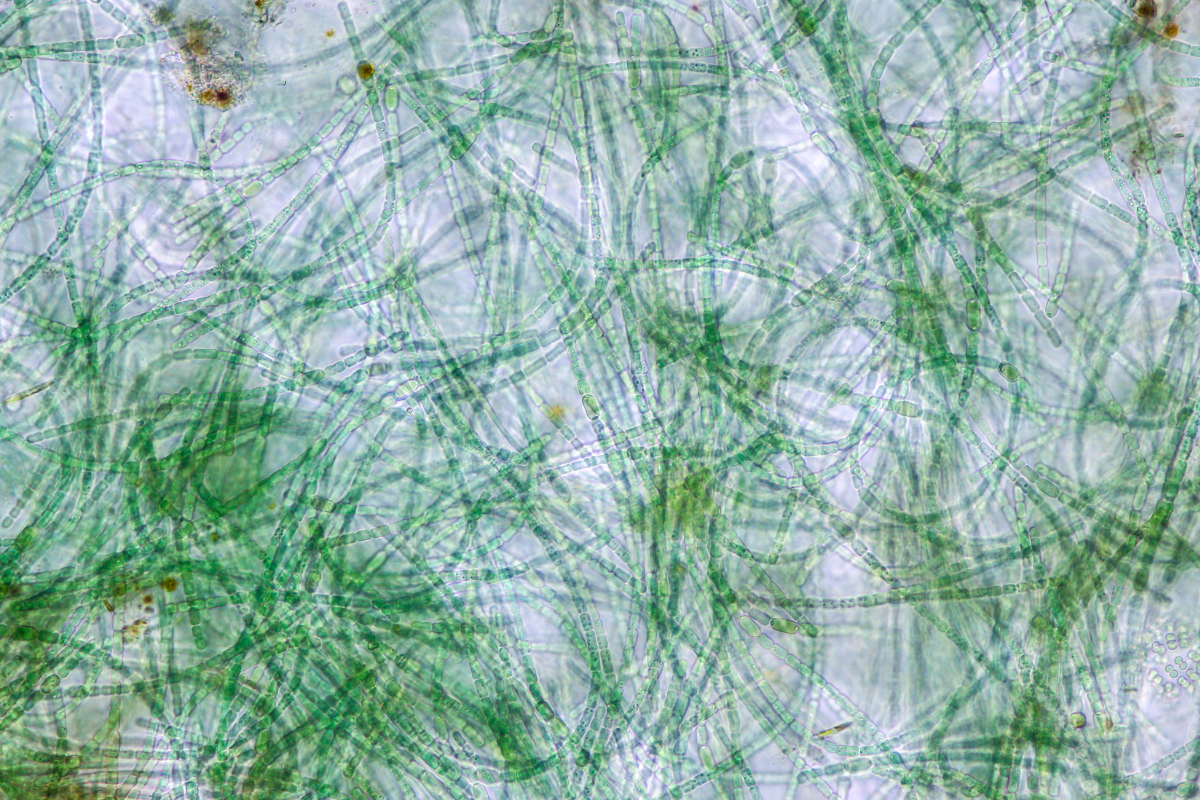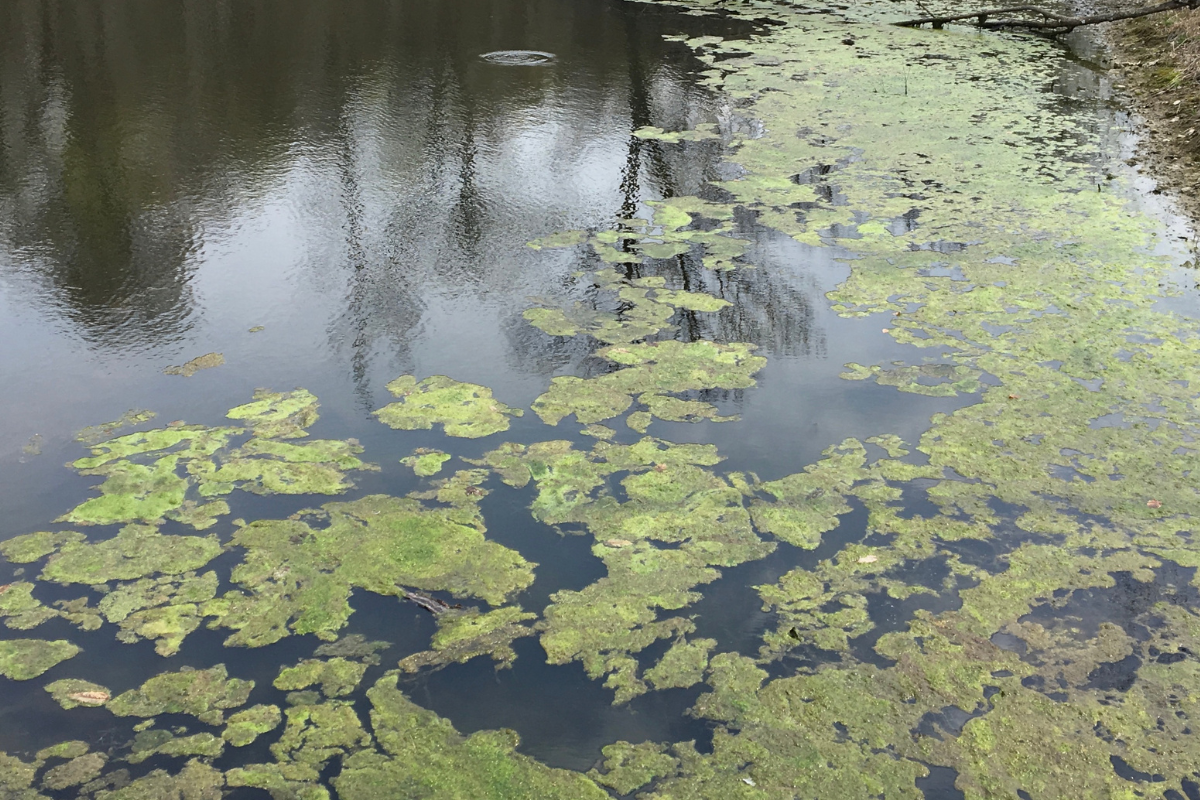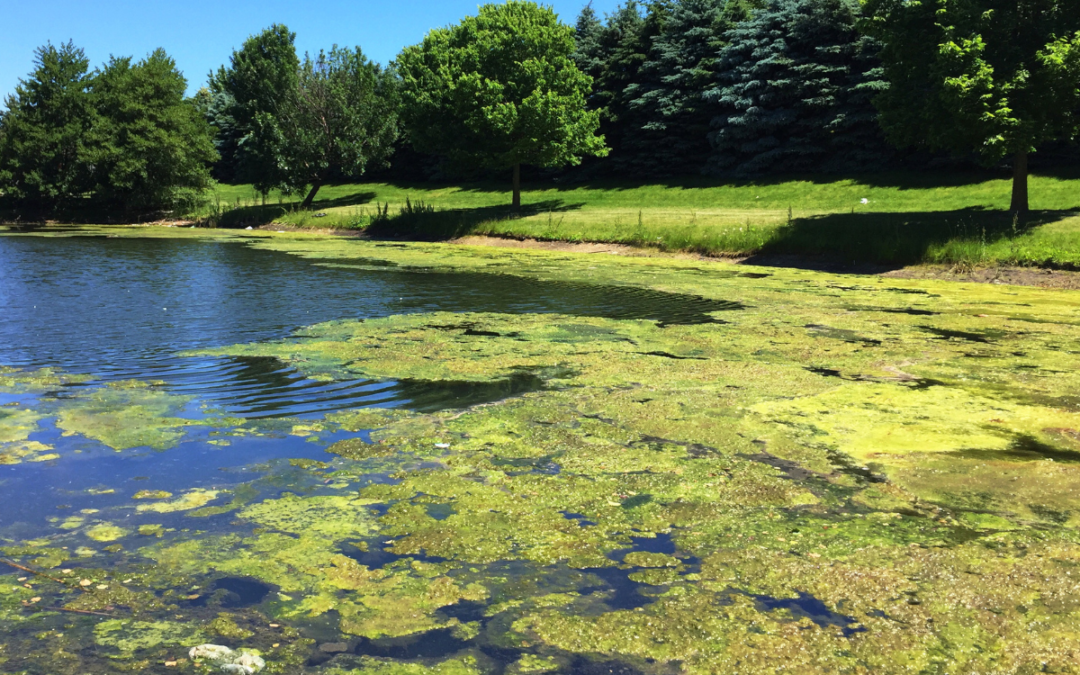Excess pond algae, also known as “pond scum”, is a persistent problem in many of the ponds we service in south Georgia and north Florida. If left unmanaged, pond algae can quickly consume the surface of a pond. This not only drastically reduces the recreational potential of a pond, but it can also greatly reduce the water quality.
Significant algal coverage will shade any subsurface vegetation in the pond or lake, reducing the overall plant diversity in the pond. Coverage of the water surface also restricts the open flow of oxygen into the water. The end result is that the dissolved oxygen levels in the water become depleted, potentially damaging the fish populations in the pond.

What Causes Pond Algae?
One might think that excessive pond algae is caused by high nitrogen, but it’s not. Algae typically needs three things to thrive — carbon, nitrogen, and phosphorous. Carbon and nitrogen are readily available through the exchange between the air and water, but phosphorous is not.
As a result, phosphorous is considered to be the “limiting nutrient” for pond algae. This means that the ratio of phosphorus to nitrogen has to be right for a bloom to occur. When significant amounts of phosphorus are added to the water, the conditions become perfect for pond algae populations to thrive.
Sources of Phosphorous Accumulation
Phosphorus accumulation in ponds and lakes can be caused by two primary sources — runoff or sediment release. Runoff can occur in areas that are near chemical plants where excessive phosphorous loads are released into aquatic systems. It can also occur in farm ponds that are near heavily fertilized farmland.
Phosphorous also will accumulate in the pond sediment over time. This is usually not an issue with a new pond, but it’s definitely something that should be monitored in older, more established ponds. As organic matter decomposes and settles to the bottom of the pond, it accumulates in the sediment.
This accumulation of organic matter in the sediment creates a “muck” at the bottom of the pond. This muck is often accompanied by an “anoxic” layer of water above it. The lack of oxygen in this layer causes phosphorous to be released from the sediment, rapidly increasing the phosphorous levels in the water.

How Do We Solve This Issue?
When phosphorus inputs are heavy, algal blooms can be persistent and tough to control. If you’re having issues with algae in your pond or lake, it’s important to determine the source of the excess phosphorous. If algae is overabundant, it’s not a question of whether there is too much phosphorus. We need to determine the source.
Runoff can be tough to manage, especially if it’s coming from an industrial source. If the runoff is coming from an agricultural source, water diversion may be possible to limit the amount of phosphorous runoff into the aquatic system.
Phosphorus accumulation in pond sediment is almost inevitable. Phosphorous levels in older ponds should be monitored frequently to prevent harmful algal blooms from happening. Spraying persistent algae is only a temporary fix. When more phosphorous is released into the water, it will be back with a vengeance.
In our next blog we’ll discuss solutions for dealing with excess phosphorous in a pond or small lake. We’ll share some experiences we’ve had in managing ponds with algae problems, and how we’ve adapted our management approach on those ponds.
Let Up Help Improve Your Pond!
If you’re in the south GA or north FL areas and have algae issues in your pond or lake, complete this form and we’ll contact you to schedule a time to meet. We look forward to turning your pond into a productive fishery for years to come!

